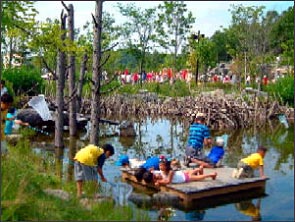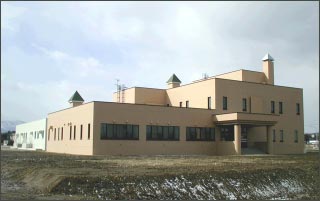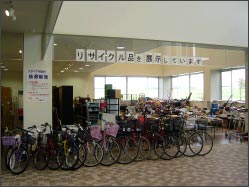 |
| Parks,
Sewage and Environmental Sanitation |
|
In recent years, though life has
been improving and urbanization has progressed, the demand for facilities
such as public parks, sewers and environmental sanitation is steadily increasing.
We urgently encourage the preparation of these facilities to
create a comfortable living environment for the future. |
In Hokkaido, although public park
area per capita is first in the nation, it cannot be said that there are
enough parks near enough to residential areas where people feel comfortable
to walk.
Development of public parks in accordance with various needs,
including steady development of the National Takino Suzuran Hill Park, parks
for use in winter and public parks equipped to accommodate trailers is needed
throughout Hokkaido.
The green-tract land preservation project of Sapporo City and
such projects elsewhere should be encouraged. |
 |
| The National
Takino Suzuran Hill Park "Children's Valley (Mori-no-Ike)"
(Sapporo City) |
|
By the end of 2003, Hokkaido underground
sewers had been extended to reach 86% of the population. Although this ratio
is over 67% of the national level, while major progress has been made in
large cities it is still at a low level in towns and villages. To improve
the living environment while preserving the rich, natural beauty of Hokkaido,
there needs to be much more promotion of sewage projects.
Hokkaido has again begun to promote sewage disposal measures
because of water pollution and public health problems resulting from the
unchecked flow of untreated sewage from a combination of sewage systems
into drinking water for public use. |
 |
| Sewage disposal
plant service begun in 2004 (Kikonai Town) |
|
There is need for further development
of a dependable system for supplying stable, safe and good-tasting water,
the lifeline directly linked to the life of the nation.
For this reason, centered on the development of tap water service
and broadening the infrastructure of water service, there is need for advanced
development to maintain a constant supply of water, by such measures as
strengthening resistance to earthquakes and water shortages, reservoirs
for emergencies and replacing worn out pipelines. Moreover, an upgrade of
facilities is needed to prevent the spread of diseases such as echinococcosis
and cryptosporidiosis infection caused by poor water service and life-styles. |
| [Waste Disposal and Treatment Facilities] |
Development of waste disposal
and treatment facilities is behind. A key project for Hokkaido from now
on is to convert waste disposal and treatment facilities to a system that
will lessen the load on the environment. To do this, promoting waste reduction
and recycling, Hokkaido is developing garbage incineration and recycling
facilities.
Hokkaido is positively advancing an efficient sewage disposal
systems using septic tanks because in sparsely settled areas, over a short
period installation expense is comparatively low and they are strongly resistant
to disaster threats. |
 |
Exhibit of
recycled articles at a recycling facility
(Sunagawa District Division Sanitation Association, Clean Plaza "Kuru-kuru
") |
|
|